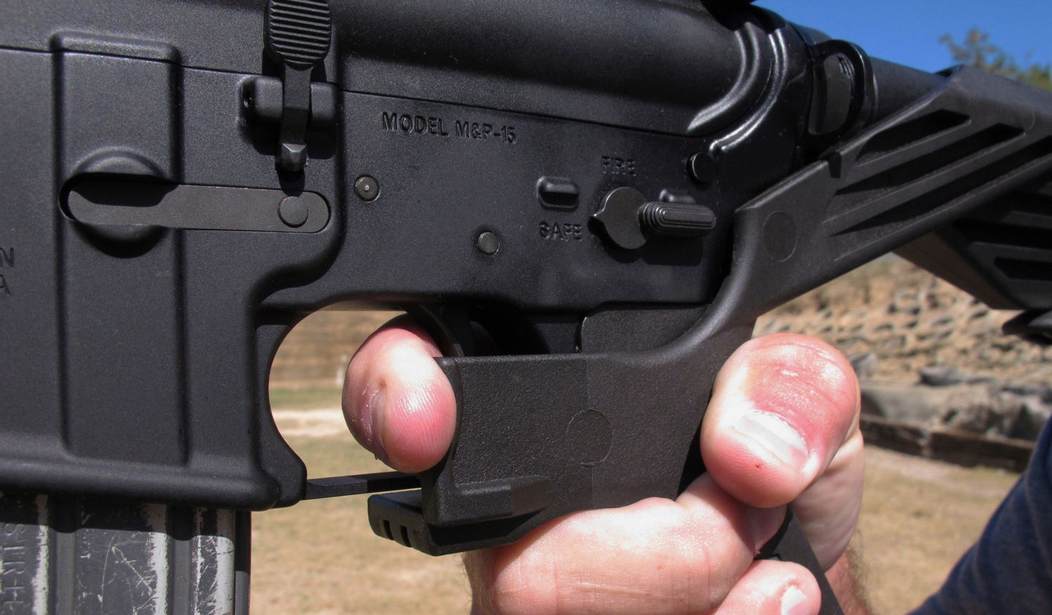The Trump administration-imposed ban on bump stocks, crafted through ATF regulations instead of actual legislation, will remain in effect for the foreseeable future after the Supreme Court turned away two challenges to the ban that had been winding their way through the courts since shortly after the ban was imposed in 2019.
The Court declined to intervene to stop the administrative action from taking effect several years ago, but Second Amendment activists and gun rights groups continued to challenge the ban in the years since, and last week justices took up the two cases in conference. Monday’s order list didn’t contain the good news that 2A advocates were hoping for. Instead, the Court rejected the challenges without dissent from any of the six justices who voted earlier this year to overturn New York’s “may issue” carry laws in NYSRPA v. Bruen.
The bump stocks challenge, however, did not deal directly with the scope of the right to bear arms under the Second Amendment. The challengers instead said the government did not have authority to ban bump stocks under the National Firearms Act, a law enacted in 1934 to regulate machine guns. In 1968, the Gun Control Act expanded the definition of machine gun to include accessories “for use in converting a weapon” into a machine gun, and the ATF concluded when it issued the ban that bump stocks meet that definition.
The groups challenging the ban said the legal definition of machine gun has been distorted beyond recognition and argue that courts should not defer to the federal agency’s interpretation.
The court turned away two related appeals, one brought by Clark Aposhian, a Utah gun lobbyist who had purchased a bump stock before the ban took effect, and another led by Gun Owners of America and other gun rights groups. Lower courts upheld the ban, although judges on the Denver-based 10th U.S. Circuit Court of Appeals and the Cincinnati-based 6th U.S. Circuit Court of Appeals were divided in both cases.
To say this is a disappointing result would be putting it mildly, and there most certainly will be consequences to the justices’ refusal to hear either case. The Biden administration has already used the same executive authority that then-President Trump used to direct the ATF to craft its bump stock ban to target unfinished frames and receivers sold in DIY gun-making kits, and the Court’s inaction will only embolden anti-gun officials and the gun control lobby to further abuse the scope of executive branch authority to impose even more gun control laws that don’t have enough support to win congressional approval.
The decision is also very bad news for the hundreds of thousands of Americans who lawfully purchased bump stocks before the ATF suddenly reversed course and declared them to be machine guns. Possession of a bump stock is now the same as possessing a machine gun in terms of federal law, which makes any gun owner who still owns one of the devices subject to a $250,000 fine and the possibility of up to a decade in federal prison.
While the Supreme Court will have other opportunities to weigh in on executive branch overreach that infringe on the right to keep and bear arms, unfortunately that’s because there are other areas of infringement taking place. Not only are the ATF’s new rules on frames and receivers being challenged in court, but the pending rules that could turn millions of AR-style pistols equipped with shoulder braces into short-barreled rifles subject to the registration provisions of the National Firearms Act are also facing litigation. Still, the gun control lobby and the Biden administration are almost certain to take advantage of today’s inaction by SCOTUS, and with gun control groups already lobbying behind the scenes for the ATF to regulate AR-15s and other semi-automatic firearms as if they’re machine guns as well, the ATF could soon take aim at the tens of millions of modern sporting rifles in the hands of gun owners… not to mention the lives and liberties of those gun owners themselves.









Join the conversation as a VIP Member